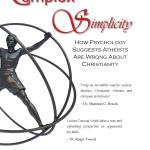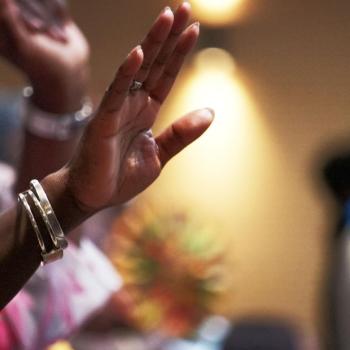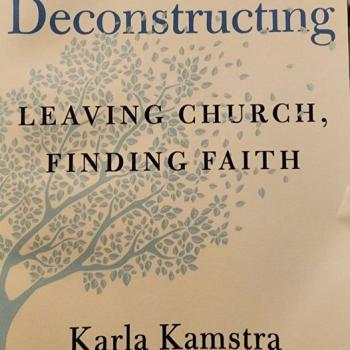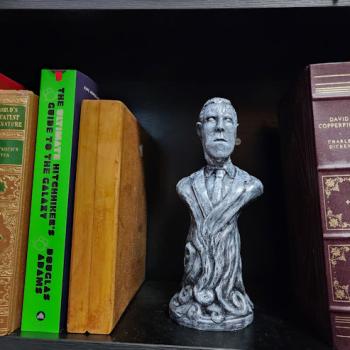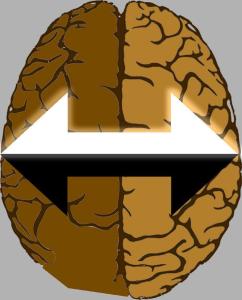
For this first entry in Switching Sides, I would like to tell you the story of who I am and what can be expected in this blog.
How I Got into Psychology
My name is Joel Furches, and I am a research psychologist specializing in religious conversion and deconversion research. But how did I get here, and why do I do what I do?
The story of Switching Sides goes all the way back to High School. In the carpool I took to get to school each morning, I sat next to a child with severe autism. He was generally very agitated, but I had a knack for keeping him calm, making the ride a great deal more pleasant for all of us. His parents, who had been unable to get out of the house since he was born, due to his extensive needs, were elated to have met a person who could care for their child, and I quickly got some regular and fairly lucrative babysitting work.
On my first day of High School, I met a boy who was entirely blind. One of the smartest people I have ever known, but he counted on his classmates to lead him about and help him with his classwork, and I became the close friend to do just that.
When it came time to select a college, I would have enthusiastically gone into some kind of art-related major. However, my parents, who were paying for my schooling, insisted I get some kind of major which would allow for gainful employment. Seeing my knack for working with people who had special needs, they insisted I pursue a degree in Special Education. They were paying, so I followed their wishes. My college career was unfortunate – almost disastrous. The head of the Special Education department contracted cancer my freshman year, and unfortunately passed away soon after. The person they transferred in to temporarily take charge of the department was not prepared to handle the position. Being as how she was my default advisor, she gave me a series of bad advice, and by the time Senior year rolled around, I did not have the coursework I needed to graduate with an education degree. I was forced to switch tracks to the only degree I had enough course work to acquire: psychology.
I was not a person who had any interest in psychology (I was a bit edgy about Education as well), but it was the only option I seemed to have, so I took it. Eventually I did get a master’s degree in Special Education, which included several courses on Behavioral Therapy. This inadvertently increased my psychology knowledge and experience.
Publishing on Religious Conversion
Having concluded the college chapter of my life, I went on to various jobs, some of which were mental health related. Eventually I became a columnist for an online news site. My column was related to religious news, but due to my background, I tended to interact with psychology of religion material.
One month I began to publish a series of human-interest pieces. One-a-day, and the theme was atheists who had converted to religion. It was the most popular series I had ever published, and several other online publications requested to re-publish these stories on their sites. The stories were popular among Christians, who loved a good redemption story, and were widely read by atheists who were critical of the material. One of the criticisms launched my direction asked why I did not publish the other side. Why not counterbalance the stories of converted atheists by presenting a series on deconverted Christians? It was a tempting idea, but given that I was writing a column on Christianity, it would not be appropriate to my news beat.
An unintended outcome of the series was the fact that I began to identify specific patterns in these conversion stories. With my background in psychology, I was able to see themes in the experiences of these converts. I eventually published an article on these themes, and I was interested in doing something similar with deconverts and then compare the two experiences.
Modeling Deconversion
The publication for which I wrote eventually went out of business, and I found myself writing for a paid blogosphere. Given that I was not restricted in my subject matter, I felt it was time to do the series on deconverts, do a case study, and then compare conversion to deconversion. It was meant to be a one-time investigative series, not my specialization. This all changed, however, once I began research for the series. The patterns I saw in deconversion were far starker than those I saw in conversion. They were so structured, regular, and apparent that before I had completed investigating the case studies, I had already developed a concrete model of deconversion. In fact, once I began writing about my model on social media, I began to be invited onto podcasts to talk about my research. I was also contacted by a psychology researcher who was convinced that I could have my findings published. It was around this time that I decided that deconversion research would be my specialty, and that I would pursue publication on my model.
The problem with this plan was, however, that I did not have the academic credentials or connections to be published beyond general blogs and possibly a book for general audiences. So I began to pursue my PhD with the intention of doing a dissertation on my model.
Where I now Stand
I began my PhD track in the field of behavioral analysis. The methods and insights of behavioral analysis provided significant advances and insights to improve my model. However, Applied Behavioral Analysis was ultimately a field devoted to treatments and interventions. It did not seem appropriate to me to do a dissertation on how to treat or intervene in conversion or deconversion. So I switched my coursework into General Psychology, where I now stand.
My research and insights continue to be sought after by atheists, Christians, and researchers. I have read extensively on the research, history, and models of both religious conversion and deconversion alike. While the field of religious conversion research has a history going back over 100 years, deconversion research is still in its infancy. However now is a time in which such research is booming. Why? Because religious deconversion has gained a great deal of public attention over the last 10 years or so, and has now become a full-blown movement (popularly referred to as “Deconstruction”). As stories of Christian celebrities coming out as freshly minted atheists on an almost monthly basis, as books and testimonies of “spiritual abuse” and “Religious Trauma Syndrome” are strewn across the internet, as websites, podcasts, and blogs in which people tell their stories and interview others on their deconversion experience propagate exponentially, now is the time wherein data about deconversion are abundant, and the harvest is ripe for researchers like myself.
In this blog you can expect to read my thoughts as a specialist on these trends, these stories, the history of research in this field, and my model on the topic. As a researcher I try to be objective and to avoid taking sides. Regardless of my personal convictions, I strive for objectivity in my research, and hope to present an unbiased take on this fascinating area of study. Whether you yourself are a convert, deconvert, or simply find the topic interesting, come with me on this journey and stay tuned.



